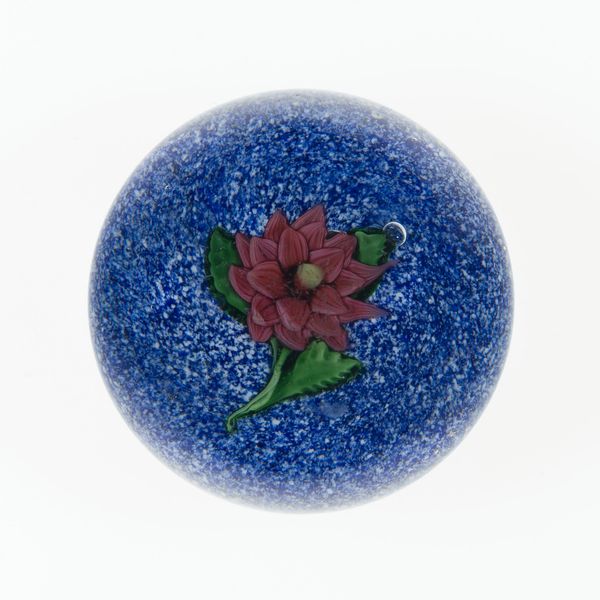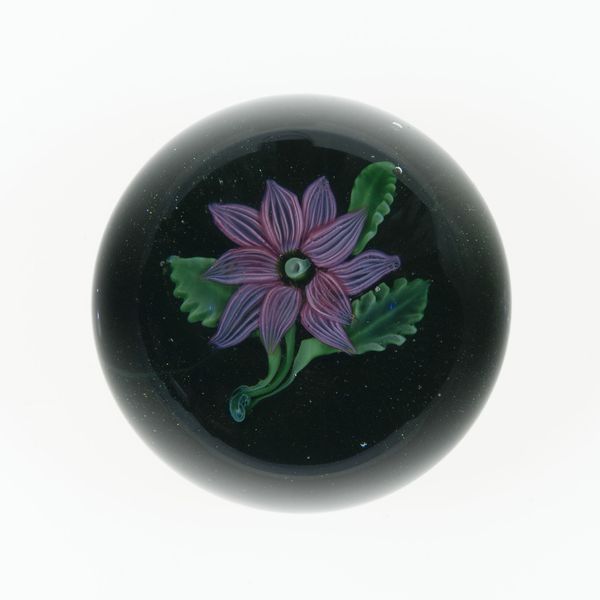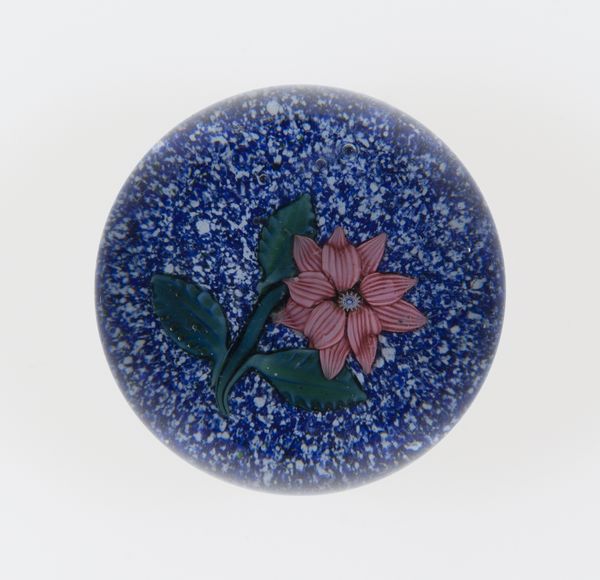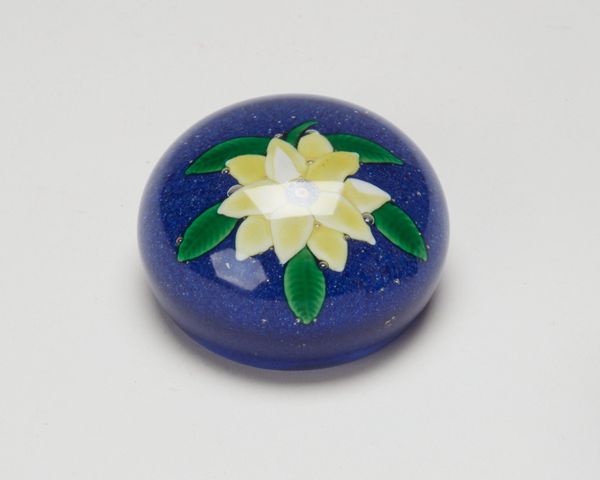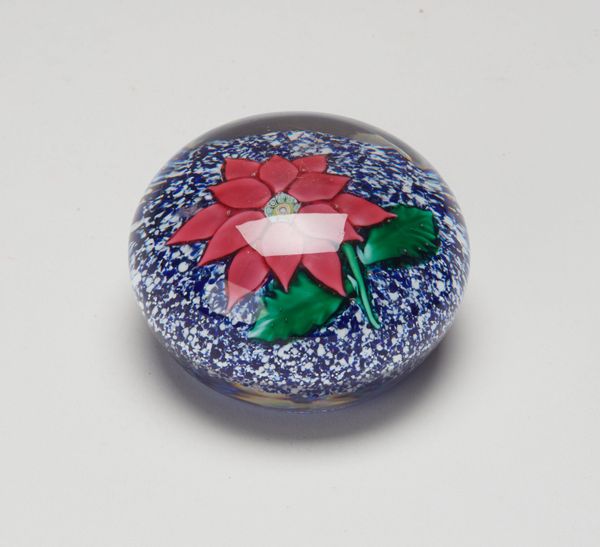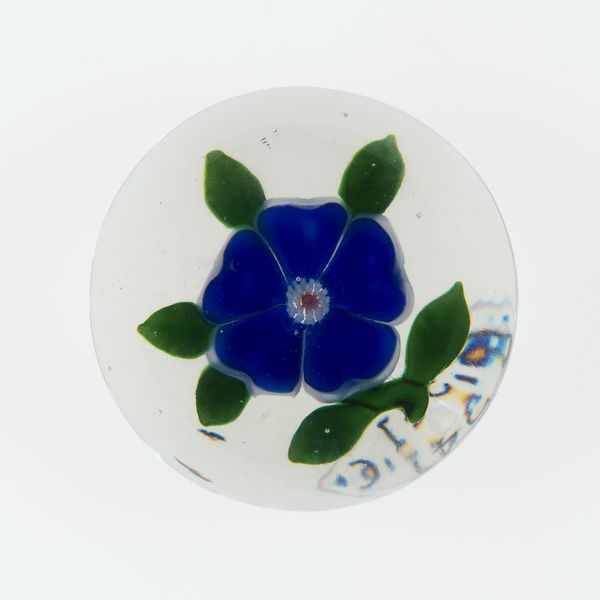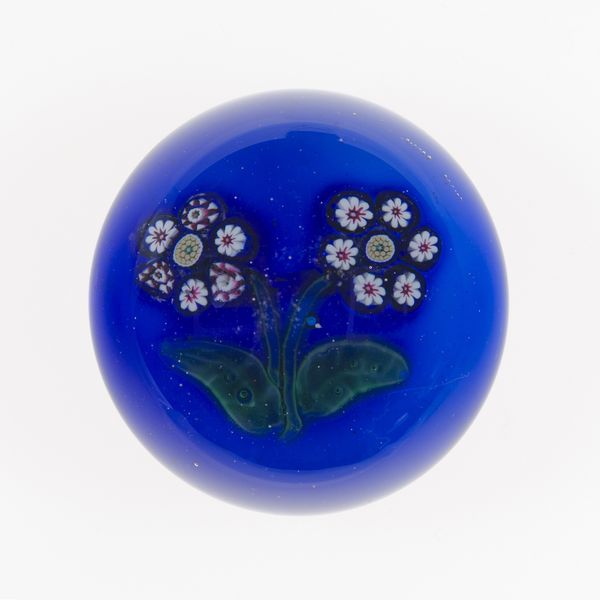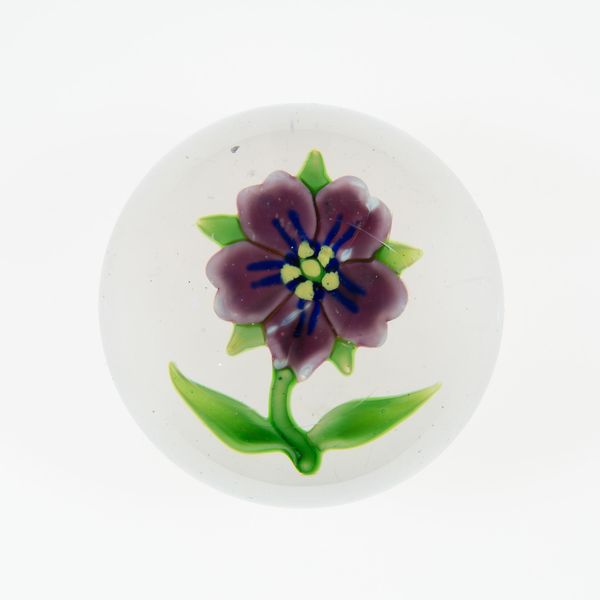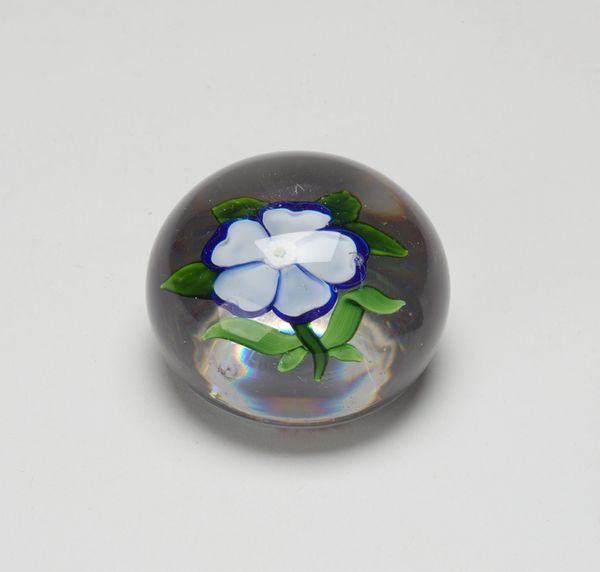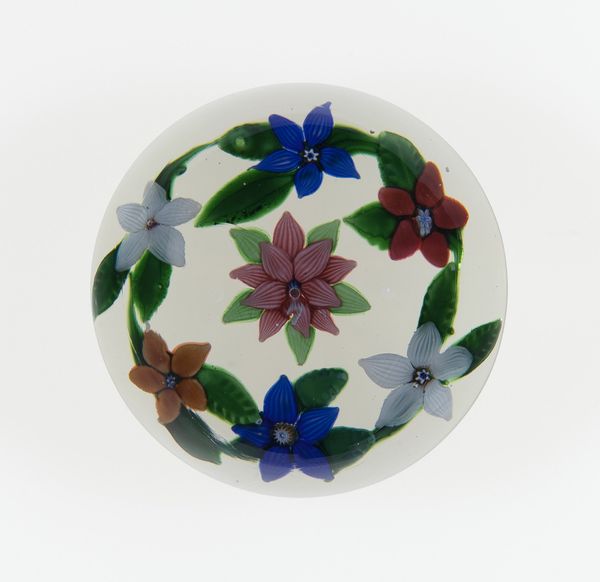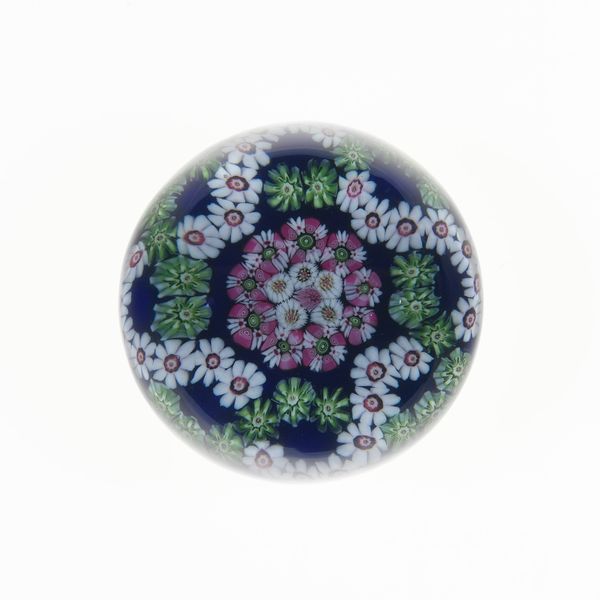
Dimensions: Diam. 7.3 cm (2 7/8 in.)
Copyright: Public Domain
Curator: I see the universe in miniature! This radiant sphere seems to hold an entire secret world captive inside. Editor: It certainly does possess a self-contained quality. What we're observing is a glass paperweight created by the Compagnie de Saint Louis sometime between 1845 and 1860, currently held at the Art Institute of Chicago. There are two flowers encased within the clear glass, aren’t they vibrant? Curator: Aren’t they just exquisite? Encapsulated perfection, you know? I bet, from another angle, they become something entirely new. I wonder about the hands that made it; did they see this jewel as a symbol? A longing for beauty, perhaps? Editor: Well, situating this piece in its historical context, paperweights like these weren’t merely decorative. They were products of their time. Think about the rise of the middle class during the Industrial Revolution and the creation of domestic sphere and increased consumerism. Curator: Ah, yes, a bit of bourgeois whimsy then, holding down correspondence and dreams in equal measure? But that radiant blue… almost cerulean! Editor: The cobalt blue, I think, elevates this piece beyond simple domesticity. The deep, almost velvety, backdrop emphasizes the delicate nature of the floral arrangement and highlights its symmetry, its symbolism. Curator: Yes, but… symmetry? The white flower's prominence against its carmine companion evokes… perhaps a little power play, doesn’t it? One trying to overshadow the other? Or are they simply holding each other? A metaphor for resilience, I mean? Or is that just me waxing too poetically? Editor: Power dynamics were definitely at play in mid-19th-century French society. And considering these paperweights often ended up on the desks of men involved in commerce, one could explore questions about patriarchy’s dominance. The paperweight objectifying women in glass perhaps. Curator: Or freeing flowers from decay. So many threads to pull! This object isn’t just beautiful, it’s brimming with stories. All those hands that must have held it throughout history! Editor: Exactly. By understanding both the art historical background and broader social themes, we can challenge its creation in ways to provoke fresh conversations around materiality and value. Curator: It just goes to show that there is a universe in everything, it just takes a willing eye to look at it. Editor: It does encourage us to look more closely, not only at the object, but at the reflection it casts back at us.
Comments
No comments
Be the first to comment and join the conversation on the ultimate creative platform.
